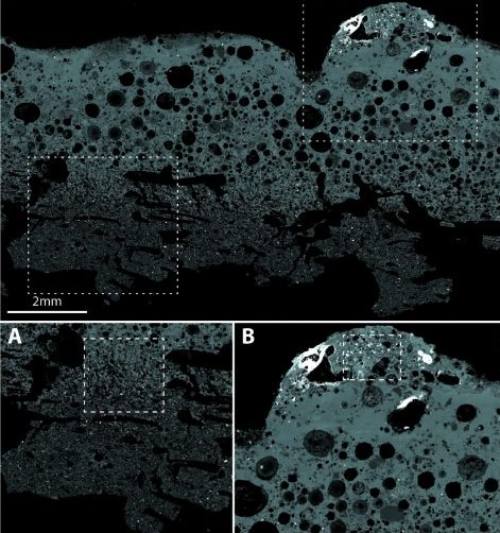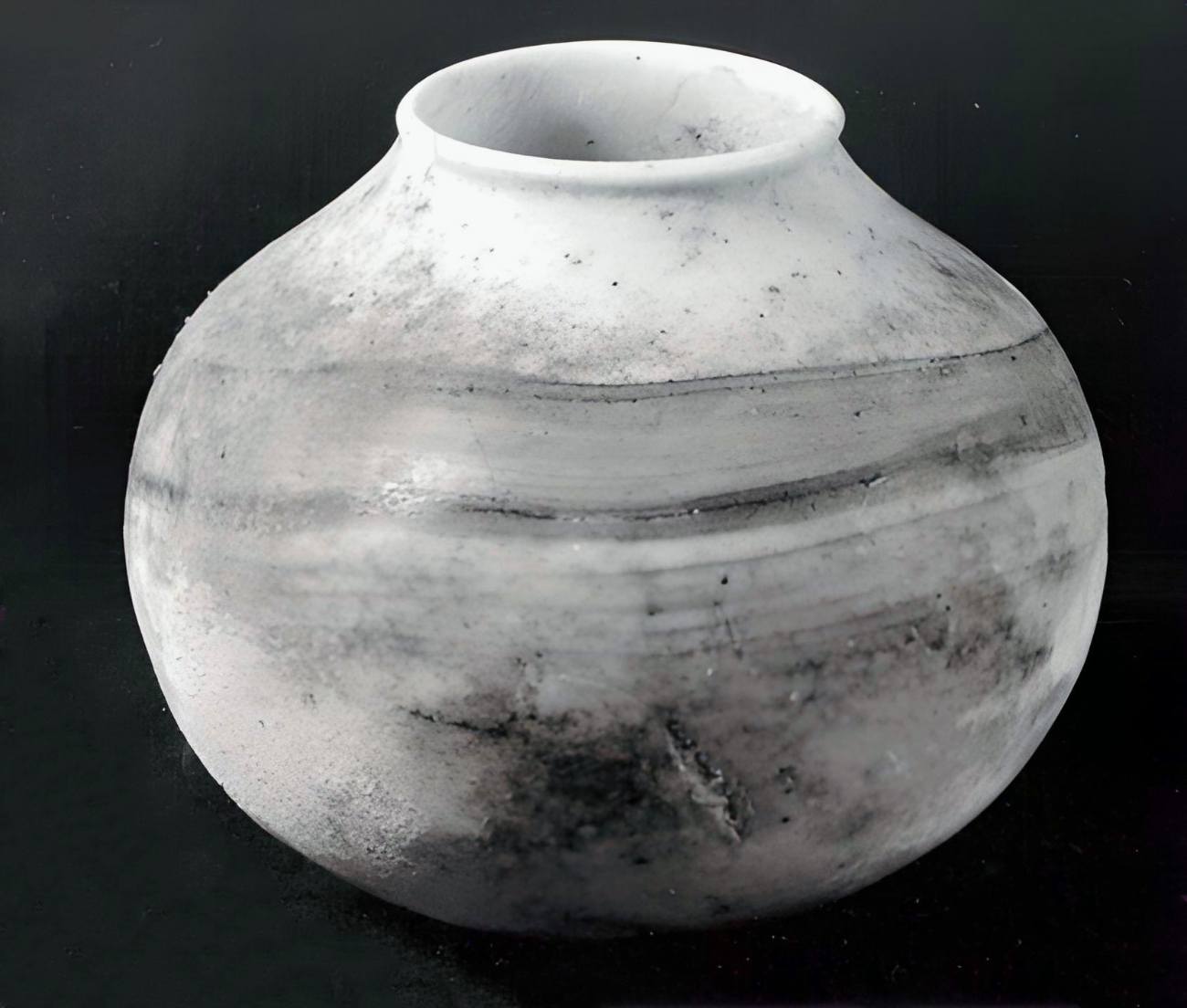Archaeometry is used to determine the nature, provenance, and function of archaeological artifacts, whether they be Stone Age artifacts, Roman frescoes, or puzzling remains in archaic containers. The scientific analysis of these artifacts yields frequently important new information about ancient societies and technologies.
High-tech examinations of artifacts are progressively providing vital insights into their origin, age, and manufacturing methods and roles, making them indispensable tools for the interpretation and analysis of archaeological findings. Archaeometry is a crucial link connecting the social sciences and natural sciences within archaeology. So, what exactly does archaeometry accomplish? If so, how and where does it put such techniques to use? The work of these specialists is elucidated via the use of examples from the geomaterial sciences.
What is archaeometry?

The investigation of artifacts and locations from the past using scientific methods is what’s known as archaeometry, or archaeological science. It has anything to do with archaeological methods.
Rocks, valuable and decorative stones, building stones, binders and pigments, ceramics and glass, ores and metals—in theory, geoscientific or material-scientific archaeometry deals with (nearly) everything that is also material for inquiry in the geosciences, including applied mineralogy and crystallography.
Biomineralization like bones, shells, corals, or organic compounds like amber might be added to the list at will. The so-called soil archive may also be considered a component of it, depending on the context, although this topic is currently predominantly addressed by geoarchaeology, which has emerged in recent years as a distinct discipline in several nations.
Perspective on how things were done in the past
There is a wide range of resources that may be cultivated by archaeometry. Materials that were created, used, and molded by humans and are therefore a representation of the deeds of our forefathers may be included as well as geological substances. The range of questions we pose to the material in the studies is distinct from those of our conventional geoscientific parent fields. Mineral pigments and rocks, for example, are examples of naturally occurring materials that have not been altered and still contain information that can be used in archaeology.
Particularly in pre-literate societies, one must rely on cultural legacies to learn about the past in ways that a cultural science approach to archaeology cannot. For instance, we can learn about ancient trade routes, knowledge transfer, and socially formative contacts between different cultures if we can identify raw material resources and experimentally reconstruct production processes, some of which are unknown.
In archaeometry, what constitutes “classical fieldwork” in geosciences entails the use of data gleaned from excavations and other fieldwork. However, at the outset of archaeometric investigations, the primary challenge is typically to identify the material. Objects that have been buried for thousands of years and subjected to the corrosive conditions of the soil environment fall into this category.

Archaeometry and archaeology
Today, archaeology projects almost never succeed without some sort of scientific input, and this goes well beyond the purview of the so-called “auxiliary science” that has traditionally been used in the field. Thus, archaeometry is no longer confined to the lab, where samples are politely handed over in plastic bags and where data tables are forgotten in the back of hefty excavation reports.
Archaeometry experts often submit applications for or initiate large collaborative projects on their own, and their research interests are highly individualized, though they frequently pertain to issues of materials in the history of technology. Concerns of value and quality, human-environment linkages, and many others are included in the portfolio alongside questions about cultural interchange and information transmission.
This makes it abundantly clear that we are interdisciplinary thinkers who move fluidly between the cultural and natural sciences, leaning more toward one or the other depending on our individual interests and institutional ties.
How does archaeometry work?
Research data collected using archaeometric methods appear, at first glance, to be identical to their mineralogical-geoscientific analogs. What is measured and indicated after the fact is not drastically different for a slab of limestone used in a Roman wall decoration and one freshly extracted from a sedimentary rock sequence. In the case of archaeological artifacts, however, additional details must be provided to ensure the long-term viability of the data.
Making the most of limited resources
Furthermore, archaeology often has a clear perspective on the objects it studies. If possible, data extraction shouldn’t involve sampling at all, and if it does, it should be done with extreme caution. This means that archaeometric analyses frequently need to squeeze as much information as possible out of small samples.
What kind of sample size is required for even minimal confidence in conclusions? That really depends on the nature of the material being analyzed, particularly its microstructure and overall composition. Although spatially resolved methods like microprobe analysis or micro-X-ray fluorescence analysis may only need a few fragments of Roman glass to obtain a proper elemental analysis, an ancient Egyptian bust carved from coarse-grained stone would not benefit from such a tiny sample size.
That’s why it’s crucial to have a good consultation. Archaeometry experts and their human counterparts should work together to collect samples or decide which parts of a larger object can be dissected and analyzed.
Multiple approaches to analysis

Once the sample is prepared for analysis, the material science techniques of archaeometry are very similar to those typically used in the analysis of geomaterials or chemicals. Methods such as polarization or scanning electron microscopy, X-ray fluorescence analysis in all its forms, microprobe analysis, and mass spectrometry are all examples of standard techniques. Additionally, cutting-edge X-ray analysis techniques and neutron activation analyses are employed to answer specialized inquiries.
Non-destructive or minimally invasive techniques are typically required for examination, depending on the nature of the substance being studied. When there isn’t enough of a sample to do a standard X-ray diffraction examination, for instance, spectroscopic techniques like infrared or Raman microscopy are commonly employed to identify pigments and binders.
Organic materials and mobile techniques
Now more than ever, archaeometric studies are concentrating on organic materials. There is typically a lengthy history of usage behind a ceramic, and in the pore patterns and fissures of the ceramic matrix are often kept material residues of foodstuffs or their breakdown products. Such chemicals and biological components may be identified using gas or liquid chromatography, as well as proteomics techniques.
The advent of portable chemical analysis tools is a huge advantage for archaeological digs and the investigation of museum artifacts that are either too fragile to leave their secure environments or are situated in another country. The usage and improvement of mobile sampling techniques, such as laser ablation for later laboratory mass spectrometry, are also on the rise and becoming more effective.
Substances show usage
Archaeometry seeks, in part, to answer questions about the purpose of artifacts by examining their composition and construction methods. This may be useful for determining what kind of product was stored in a certain container in the past.
Small ceramic vials up to around ten centimeters in size have been discovered among the artifacts of several tribes that lived throughout the Late Neolithic and Iron Ages. This kind of small vessel dates back to the 5th millennium BC and has been discovered throughout the Balkans, as well as in the southeastern Prealps (France) and southern Transdanubia (Hungary).
But what were these ancient vials even used for? Even in the case of perfectly preserved ceramic vials, the original contents and, by extension, the function are still unknown. Because of the soil’s lengthy storage time, adhesions may include subsequent forms as well as remnants of the original contents. Because of their size and elaborate ornamentation, it is believed that these artifacts formerly contained expensive cosmetic or medicinal substances, maybe for cultic reasons.
Here’s where archaeometry comes in: it takes not only chemical but also structural and material science analytical techniques – preferably non-destructive or at least minimally intrusive – to get close to the absolutely unknown nature of the leftovers in the vial.
Researchers use analytical techniques from organic chemistry like gas chromatography (GC) and mass spectrometry (MS), as well as techniques like electron microscopy and X-ray fluorescence analysis.
Anywhere from crucibles to makeup jars
Different applications are being discovered for these ceramic vials in the present day. Lead-containing slag deposits, for instance, were identified in 2019, suggesting that they served as small crucibles for lead ore. Multiple types of lead were found on content residues in a subsequent study of a similar set of items from the same location and time period.
Cerussite (PbCO3), an inorganic component, was detected in the still-preserved contents of another vial in 2021 using spatially resolved X-ray analysis and gas chromatography-mass spectrometry, along with beeswax and probably other organic components such as vegetable oils or animal fats. Whether or not the antibacterial activity of lead-containing chemicals was understood for medicinal uses, and whether or not the ingredients served aesthetic reasons, is unknown.
Finding out the origin and age
Clarifying a find’s provenance or production history is another major use of archaeometry. This is because, with the right kind of analysis, it is sometimes possible to recreate the material’s composition and the signs of different processing processes even after thousands of years have passed.
Basalt rocks
While basalt was used for many things in the past, its most notable usage was as a grinding stone, which was crucial to the preparation of many dishes. Because of its porosity structure and fine-grained mineralogical phase composition, it is ideal for grinding. Due to its often quite sharp-edged macro- and micropores, basalt maintains its grinding ability over extended periods of time.
In addition, the grain ground with basalt rock causes significantly less damage to teeth when consumed as bread or porridge due to the absence of quartz and low abrasion. Because of these qualities, millstones and grindstones fashioned from basalt were highly sought after and regularly traded across great distances and time periods.
Therefore, suitable basalt deposits were a resource in high demand across the region. Archaeometric-geoscientific approaches are necessary for tracing these paths and the consequent cultural connections since they provide a characterization of raw material and end product, allowing for a provenance study.
For example, during the Roman era, the basalt quarries in Mayen, Eifel Mountains in Germany, were a major producer of millstones. A large number of basaltic millstones discovered on excavations in many European countries were assumed to have originated in the Eifel based on macroscopic similarities.
Actually, this was demonstrated by scientists using cluster and discriminant analyses. There are even instances where they were able to attribute millstone basalt to specific lava flows.
Carolingian chalice

It is possible to learn even more about the inner workings and background of an artifact by combining the results of a chemical analysis with a microscopic examination of its structure. The Tassilo Chalice, for instance, has been protected for centuries thanks to the monks of the Kremsmünster Abbey in Austria. The Bavarian Duke Tassilo III, who passed away after the year 780, and his Lombard wife Liutperga are memorialized on this chalice alongside images of Christ and the Evangelists, among other figures.
This copper goblet with silver studs is a masterpiece of Carolingian goldsmithing. Parts of the figural medallions could have been added or changed at a later date, although scholars were divided on the subject. This is a crucial point that needs answering, since it raises room for varying interpretations of the data.
In this case, too, archaeometry was necessary. The silver overlay was revealed to be a mosaic of many tiny silver sections that had been mechanically applied, some of which were riveted on with pins. Recently repaired areas were identified by a combination of microscopic dissection of the sheets and their overlaps and detailed chemical mapping of the sheet metal sections and rivets with hundreds of analytical sites.
Also, the analyses showed that the evangelist medallions on the chalice were all manufactured simultaneously. Despite being restored at a later time, the majority of the motifs and how they were implemented date back to the Carolingian era.
History of archaeometry
To the best of our knowledge, the term “archaeometry” was first used in the early 1950s in Oxford. At the close of the 18th century, the chemistry pioneer Martin Heinrich Klaproth (1743–1817), who based his career in Berlin, first came to prominence in discussions about the scientific research of antiquities.
Material interest in what has been handed down from the “ancients” rose in tandem with the 19th-century European fervor for antiquities and the establishment of organized archaeological collections in museums. The conservation and restoration of artifacts also played a crucial role in this context, since artifacts composed of non-ferrous metals and alloys, for example, were sometimes altered beyond recognition by thousands of years of ground storage. Here, one had to use scientific procedures to figure out what substance was in question.
During the 19th century, scholars grew more interested in jewelry and valuable stones, such as those used for Roman finger rings or early medieval garment clasps. Specialized mineralogical expertise was sought to determine if glass or red minerals like zircon, ruby, spinel, or garnet were employed in the vast arrangement of burgundy clear discs.
As early as 1890, Otto Tischler conducted scientific investigations on artifacts in what was then East Prussia, and he successfully identified the red platelets as garnet using physical and optical inspection techniques. Tischler was destined for this since he possessed a doctorate in prehistory and a degree in natural sciences and mathematics with a crystallographic-mineralogical emphasis. This makes him a prototypical archaeometric researcher—someone who studies two areas simultaneously.
Modern archaeometry owes a great deal to a number of influential figures who were working in their area throughout the 19th century.
Today, archaeometry is often studied as an elective for a bachelor’s degree and less rarely as a standalone master’s program. There is a high need for this since natural sciences are essential to almost all archaeological projects.
Bibliography
- Marcos Martinón-Torres and David Killick. “The Oxford Handbook of Archaeological Theory”. Oxford University Press
- Killick, D; & Young, S. M. M. (1997). Archaeology and Archaeometry: From Casual Dating to a Meaningful Relationship? University of Arizona
- Michael E. Smith, 2017. “Social science and archaeological enquiry”.


